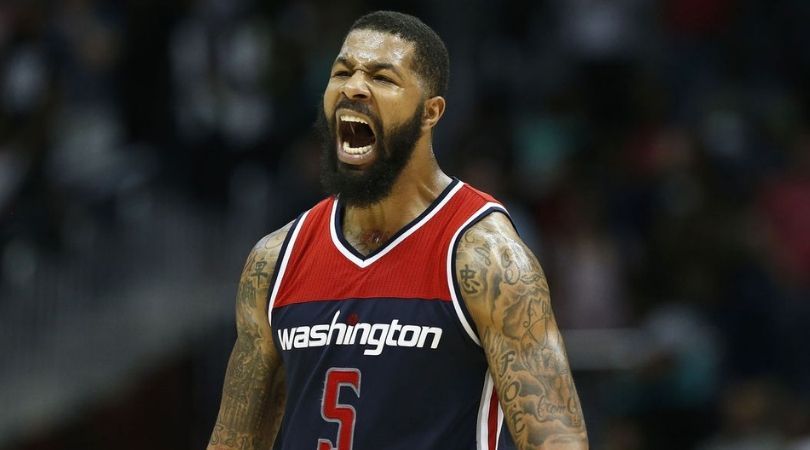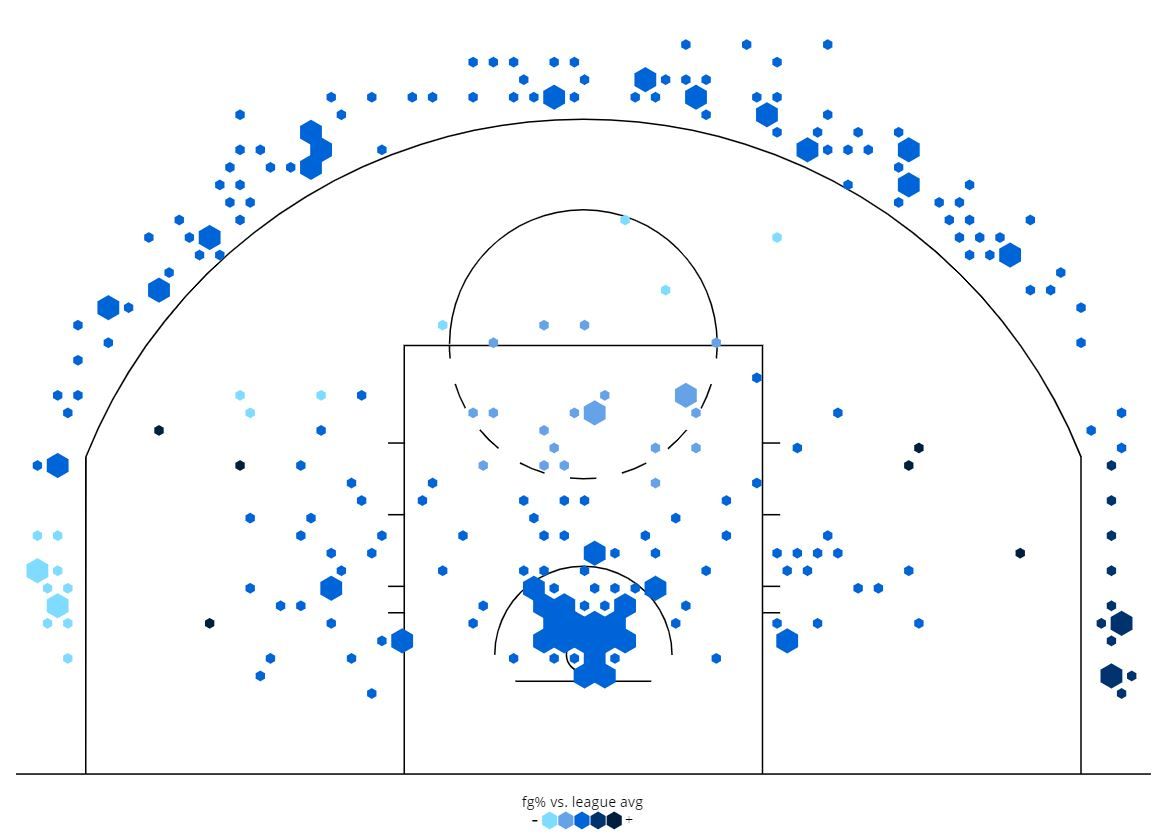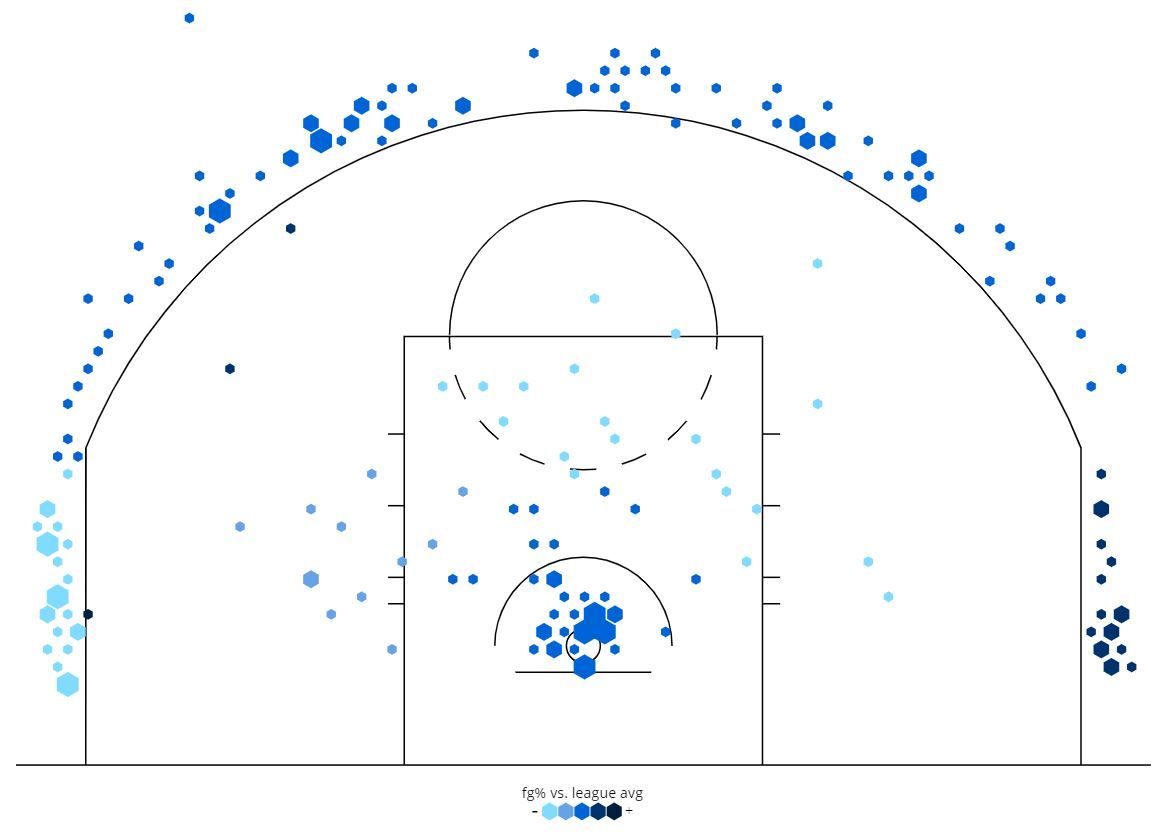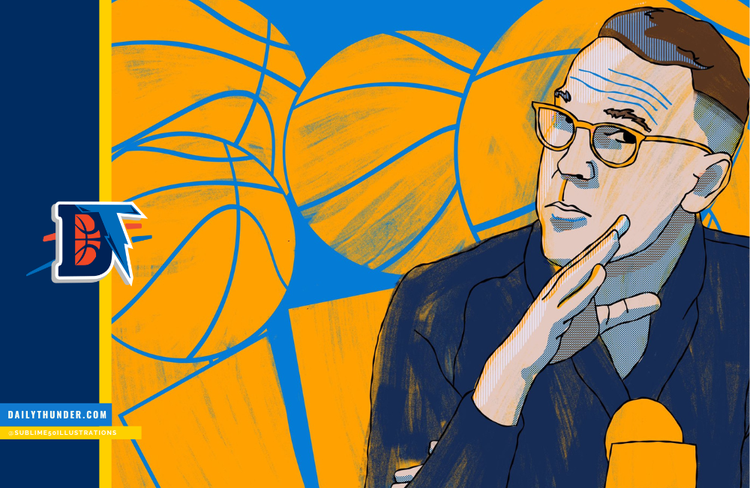Let’s Talk About Kieff

Like many who follow the Thunder, I was excited to learn Markieff Morris had agreed to sign with Oklahoma City for the rest of the 2018-19 season. He and his brother have been around a while — usually at the center of some extracurricular activities or breaking OKC’s heart with big shots. Markieff (and the Morris twins in general) has been easy enough to dislike over the years, but always seemed like a guy you’d love if he was on your favorite team. Alas, he hasn’t been.
But now he is.
Here are some thoughts on what happens moving forward.
The Injury
Before getting ahead of myself in regard to Morris and his role with the Thunder, it’s important to discuss the injury that cost him the final 19 games of his Wizards career. Morris was suffering from transient cervical neurapraxia (help me, Olivia), which is a “rare but dangerous cervical spine (neck) injury” according to Sports Med Today. He was originally slated to miss at least six weeks, putting him back on the floor in March. However, according to Yahoo’s Chris Haynes, Morris has been cleared for an early return to basketball activities after receiving a second opinion.
Morris has been sidelined since Dec. 26 after being diagnosed with transient cervical neurapraxia.
On Monday, he sought a second opinion from renowned spine specialist Dr. Robert Watkins of Los Angeles and was cleared to resume full basketball activities.-Chris Haynes, Yahoo Sports
So that’s a positive. If Morris is indeed cleared for action, it’s not inconceivable to think he could enter the Thunder rotation as soon as the end of the All-Star break. The Thunder training staff would have to sign off on it, but it’s at least a possibility.
That being said, his injury was a serious one — and in an incredibly sensitive area (the neck). Along with the natural rust he’s likely accumulated after missing the last month and a half, it shouldn’t be assumed Morris is out of the woods in terms of his ailments. Whether that means an initial minutes restriction or a bit more rehab before being thrown into the fire, expectations should be kept realistic until he actually steps foot on the court in a Thunder jersey. All of the speculation that follows is contingent on one thing — his health.
Markieff’s Role in OKC
So Sam Presti goes out and lands Morris — a guy that was traded from Washington to New Orleans at last week’s deadline, then bought out by the Pelicans en route to becoming a free agent. There were chatters of him signing with Houston, Toronto, the Lakers, and Nets. Ultimately, he decided to sign with the Thunder because, as Shams Charania of The Vertical described it, “he’s slated to play significant role in frontcourt.“
The Thunder (37-19, third place in the West) represent what Morris believes is his best fit right now, and he’s slated to play significant role in frontcourt. Morris and his agent, Rich Paul, sorted through offers this week and had positive dialogue with teams.
— Shams Charania (@ShamsCharania) February 14, 2019
But what does that mean? How significant are we talking?
The common line of thinking is Patrick Patterson will be impacted most, as he’s done very little with his nearly 15 minutes per game. There aren’t many arguments to be made on behalf of 2Pat at this point, so, despite owning depreciating property on 2Pat Island, I won’t really go there. However, their 2018-19 numbers aren’t that different when compared head-to-head — at least in terms of shooting the ball and on the defensive end.

To account for the difference in role/playing time, here are the same numbers extrapolated out on a per-100 possessions basis:

Both men are shooting 33 percent from long range this season (Patterson is the better career shooter), so if you’re hoping Morris steps in as a hired gun, you’re probably going to be disappointed. However, Morris is capable of creating his own offense, has more positional versatility and, despite struggling to defend the pick-n-roll, has some dog in him (as the kids say). If you’re choosing between two guys struggling to shoot and defend, my assumption is you go with the one proven capable of making his impact in less obvious ways. Pat’s confidence/swagger is glaringly absent. Morris has never seemed to have that issue.
Given Patterson’s general ineffectiveness/declining play, I indeed assume Markieff will start eating into those minutes rather quickly. The same could likely be said for Abdel Nader, who’s seen 13.5 MPG since January 1 and doesn’t strike me as a necessity on a postseason roster. The path to 20+ minutes for Morris is certainly there if he’s healthy — especially with Alex Abrines being waived and Andre Roberson questionable to return this season. However, swapping in a potentially more impactful player in place of Patterson and/or Nader wouldn’t come without its caveats.
Markieff’s Fit in OKC
While Morris is probably the better player between he and Patterson, their approach to the game couldn’t be more different. Patterson is a low-usage, spot up 3-point shooter, creating space on the floor by simply finding his spot and staying out of the way. On the flip side, Morris has a usage rate near 20 percent (fourth-highest among OKC’s regular rotation players, trailing only Westbrook, George, and Schroder) and prefers to do his dirty work in the post and mid-range. There’s a possibility Morris and his game become more perimeter-oriented in Oklahoma City — after all, the idea of Patrick Patterson is exactly what this Thunder team needs. But Morris is shooting slightly worse than Patterson from deep this season, so asking him to assume a role he’s ill-suited for wouldn’t make much sense.
Then again, if Morris plays like he did in Washington, he’ll require more touches than 2Pat, and in spots Pat doesn’t normally venture. As a result, the spacing could certainly suffer while everything is being ironed out. Check out their 2018-19 shot charts via StatMuse for a look into the difference in where they take their shots:


As you can see, Morris takes far more 2-pointers and spends more time in the paint, which is a far cry from where you can typically find Patterson. A little more than 62 percent of 2Pat’s total shot attempts this season have come from beyond the arc, and that’s by design. His role as a floor-spacer hasn’t worked out like many (including myself) believed it would, but he’s hardly ever guilty of clogging the offense in the mid-range. The same can’t always be said for Morris.
In the 2018-19 season, 56 percent of Morris’ shot attempts have come from 2-point range — 19 percent higher than Patterson. Based on the percentage of total shots by distance this season, here’s how they stack up:
| 2018-19 | 0-3 FT | 3-10 FT | 10-16 FT | Long 2 | 3P |
|---|---|---|---|---|---|
| Morris | 20.7 | 15.9 | 15.9 | 3.7 | 43.9 |
| Patterson | 15.7 | 10.1 | 9.2 | 2.3 | 62.7 |
In short, giving Morris all of Patterson’s minutes is a fine idea in a vacuum, but it will take some trial and error to see how it actually works on the floor. Due to the presence of Steven Adams and Nerlens Noel, posting up Morris and letting him go to work like he’s accustomed to would pack the paint with defenders and take away lanes that Westbrook, George, and Schroder like to drive down. As such, Morris will need to find comfort in moving without the basketball, and, as Fred Katz pointed out, learn to pop out to the 3-point line instead of hovering in the mid-range after setting the screen in the PnR.
If Morris can do that and grow comfortable in his role over the remaining 25 games, Presti may have something here. If he can’t, it could ultimately result in a more damaging version of Patterson based on the lack of spacing alone. It’s one of those things you don’t always notice until it’s gone.
Moving Forward
Numbers and potential pitfalls aside, adding Morris was a no-brainer for a Thunder roster in desperate need of depth. While he may not be the second unit savior many expect him to be, his presence gives Billy Donovan a versatile tool that’s preferable to what he’s currently getting from Patterson, Nader, and Deonte Burton. As the bench gets shorter ahead of the postseason, putting trust in a veteran is more palatable than turning to inexperienced players better suited for the end of the bench or in the G-League.
In terms of expectations, it’s hard to say exactly what OKC is getting in Morris — due in large part to his recent injury that resulted in more than a month off. His pre-injury numbers weren’t great in Washington, but it’s difficult to decipher what those stats mean when you consider how bad the Wizards have been this season. Morris may see some positive regression by simply being surrounded by better players. That’s the hope, at least. If he buys into a lesser role than what he had, it could work out really well for everyone involved. He could be a hell of a fifth/sixth option if he decides it suits him.
Ultimately, signing Morris is a low-risk, high-reward move for Presti and the Thunder. At his best, Morris is an effective scorer and adds a nastiness dimension that doesn’t currently exist on the roster outside of Westbrook. At his worst, he’s probably no worse than what we’ve seen from Patterson this season, but you still get the nastiness because nasty is nasty and there’s no turning that off. It’s in the DNA.
So, yes — I think it’s a move worth a healthy amount of cautious optimism. If his neck is right and he can learn a new role in a short amount of time, there’s not much to dislike about the potential upside here. Morris could supply the struggling second unit with another scorer, and can also help carry some of the offensive burden alongside Westbrook or George in staggered lineups. It may not turn out to be the needle-mover the Thunder need to challenge the Warriors come playoffs, but it was the best option available to Presti at the moment. He was right to take the flier on Morris, if only because the team is deeper than it was yesterday morning.
Based on that alone, it’s tough to hate the addition in any capacity. It will be interesting to watch develop down the stretch of the regular season and into the playoffs.


